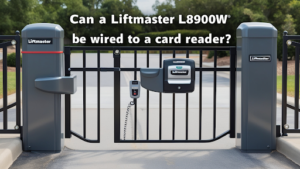
Stump Grinders
Stump grinders are a godsend for anyone who’s had to deal with the aftermath of tree removal. Whether you’re a seasoned landscaper, a homeowner with a green thumb, or a tree service professional, understanding how to use a stump grinder can transform a laborious task into a swift and efficient one. This thorough tutorial will take you through all the ins and outs of stump grinders, including the many kinds available and the crucial safety precautions you should know.
Understanding Stump Grinders
A stump grinder is a large, heavy piece of equipment to remove the remaining stump and roots from a fallen tree. During this operation, the wood is chipped away until only a slurry or mound of wood chips that may be replanted remains.
When Should You Use a Stump Grinder?
Eliminating Hazards and Reclaiming Space
Safety is the primary reason for using a stump grinder. Tree stumps can be severe tripping hazards, especially for children or older people. Additionally, they take up valuable space that could be used for landscaping, a new tree, or even a sitting area.
Construction and Renovation
Tree stumps can greatly hinder progress in particular construction and renovation projects. Removing them with a stump grinder is often the fastest and most effective method, ensuring that roots don’t continue to grow and cause structural damage.
Quick Clearing for Emergency Services and Events
In emergencies, quick access is imperative. Stump grinders can rapidly clear the way for emergency services and public events, ensuring unobstructed and safe access.
Types of Stump Grinders
Walk-Behind Stump Grinders
The most common type of stump grinder, walk-behind models, are easy to maneuver and are ideal for residential or small-scale commercial use. They are less potent than other models, but make up for it with their ease of use and versatility in tight spaces.
Ride-On Stump Grinders
Ride-on stump grinders are best for larger areas or commercial use. They have more power and speed, and their operators can usually work through stumps quicker than with walk-behind models. They require more space to operate but can handle a variety of terrains and conditions.
Mini-Skid Steer and Skid Steer Stump Grinders
For professionals who own or have access to skid steers, mini-skid steer stump grinders can be a convenient attachment that turns their existing equipment into a versatile stump-removing machine. These are best for projects requiring a skid steer for other tasks, minimizing the number of machines needed on site.
Safety First When Using a Stump Grinder
Personal Protective Equipment (PPE)
Always wear appropriate PPE, including goggles, a face shield, gloves, and sturdy, steel-toed boots. Ear protection is also recommended, as stump grinders can be pretty noisy.
Familiarize Yourself with the Equipment
The grinder’s user handbook should be read and understood. Discover every function, but pay particular attention to the emergency shut-off methods.
Work in Pairs
Using a stump grinder and having someone else with you are always best. They can provide an extra set of eyes and hands to ensure safety.
Keep the Work Area Clear
Only work on one stump at a time and keep the area clear of debris that could cause you to trip or get caught in the grinder.
Renting a Stump Grinder
Buying a stump grinder isn’t cost-effective for most homeowners and even some professionals. Renting one is a simple and accessible option. When renting, ensure the machine is properly maintained and in good working order.
Manually Removing a Stump
In some cases, removal by hand may be required or desirable. It might be laborious to dig and chop off the roots for this. Assess the stump’s dimensions and position to see if manual removal is a feasible solution.
In Conclusion
Stump grinders are invaluable for quickly and efficiently removing tree stumps. Whether you’re reclaiming space for a garden, eliminating hazards, or preparing a site for construction, understanding how to use a stump grinder can make the difference between a simple task and a complicated chore.
Always prioritize safety and know when to handle a project manually rather than with heavy machinery. This will ensure that your landscaping and construction tasks are completed safely, efficiently, and effectively.







